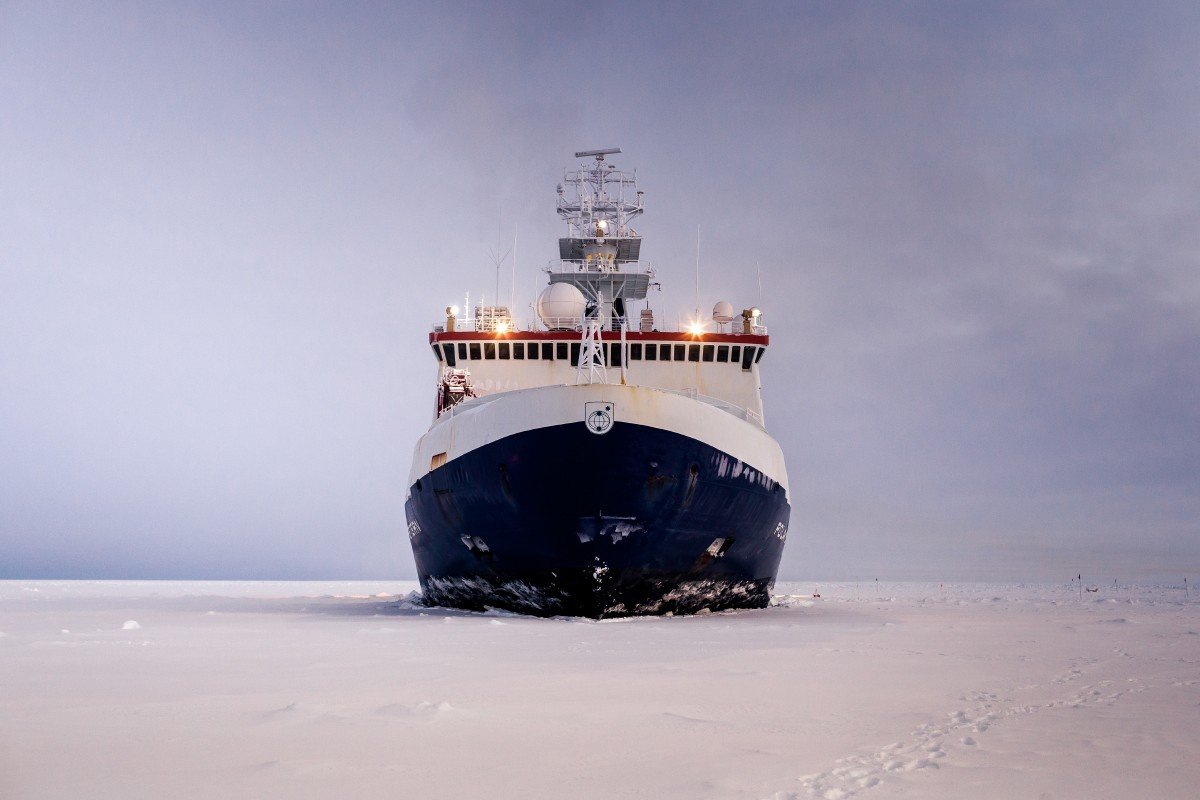
On the 9th of February, an international research team led by the Alfred Wegener Institute (AWI) will start an expedition to the remote The Larsen C Ice Shelf. The researchers want to explore the marine ecosystem hidden under the ice shelf. In July 2017, a huge iceberg seven times the size of Berlin calved off from the Antarctic Larsen Ice Shelf. The demolition of the iceberg called A68, opened up an area of approximately 5,800 square kilometres from the hundreds of metres thick layer of ice shelf. A world unknown to mankind, as up to now, it has remained hidden under the thick ice. Now, once again, the researchers are planning to travel by ship from Punta Arenas (Chile) to the region east of the Antarctic peninsula to take samples from the seabed there. Their journey with the icebreaker ship ‘Polarstern’ will take nine weeks. The difficult navigation through the sea ice will be supported by satellite images.
HASTE MISSION
The mission is urgent: The ecosystem, which has probably been covered by ice for several thousand years, could rapidly change with the new incoming light. “The expedition to the Larsen C Ice Shelf is a unique opportunity for the international research community to carry out interdisciplinary research in this region affected by climate change,” says Dr. Boris Dorschel, the scientific leader of the expedition. As Larsen C is positioned very southerly in the Antarctic, there is still a lot of ice, even in times of minimal sea ice cover. Nevertheless, the expedition should take place as soon as possible. The researchers are hoping to gain insights into the recently freed world and hope to uncover some of the secrets of the ice shelf and the A68 iceberg. Among all other things, the seabed structures will also be investigated. For research purposes, they will also use high-resolution satellite data and the on-board helicopter of the Polarstern.
DRAMATIC ECOLOGICAL CHANGE
“Calving A68 is a unique opportunity to study marine life that is undergoing a dramatic ecological change,” says marine biologist Dr Huw Griffiths of the British Antarctic Survey (BAS). He is leading one of the projects investigating seabed biology. Since the area hasn’t seen sunlight for thousands of years, researchers believe that an assemblage of species have developed here and have adapted specifically to a life with very little, available food. Griffiths adds: “The demolition of this huge iceberg is like suddenly taking the roof from a cave. For the first time in thousands of years, sunlight can cause microalgae to grow on the surface of the water, altering the entire food chain and subsequently, causing other species to colonise. The expedition team will study animals, microorganisms, plankton, marine sediments and water samples. They will use a variety of equipment, including underwater video cameras and a sled which is used to collect small animals from the seabed. They will also precisely measure the seabed using sonar systems.
BACKGROUND
The Alfred Wegener Institute, Helmholtz Centre for Polar and Marine Research (AWI), conducts research in the Arctic, Antarctic and average and high latitude oceans. The institute coordinates polar research in Germany and provides international science with important infrastructure. Amongst others, the icebreaker Polarstern research and stations in the Arctic and Antarctic. The Alfred Wegener Institute is one of the 19 research centres of the Helmholtz Association. This is the largest scientific organisation in Germany.

